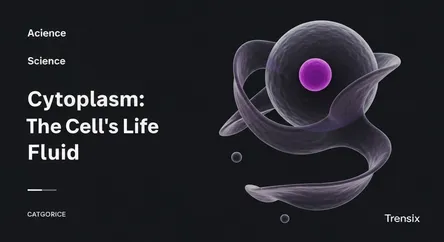Science
Cytoplasm: The Cell's Life Fluid

Explore cytoplasm, the essential jelly-like substance filling every cell. Learn its components and its critical role in metabolic processes and life.
What is it?
Cytoplasm is the thick, solution-like substance that fills each cell and is enclosed by the cell membrane. In eukaryotic cells, it surrounds the nucleus and consists of two main parts: the cytosol, a gel-like fluid made of water, salts, and organic molecules, and the organelles, which are specialized structures like mitochondria and ribosomes suspended within it. The cytoplasm also houses the cytoskeleton, a network of fibers that provides structural support, facilitates cell movement, and acts as a transport system for the organelles. It's the primary location for most of the cell's metabolic activities.
Why is it trending?
While a core concept in biology, cytoplasm is at the forefront of modern research. Its role in cellular diseases like cancer and Alzheimer's is a major focus, as scientists study how disruptions in cytoplasmic processes contribute to these conditions. Advanced imaging technologies now allow for real-time observation of activities within the cytoplasm, revealing new insights into cellular health and aging. Furthermore, fields like nanotechnology and drug delivery are developing methods to precisely target organelles within the cytoplasm, making it a critical area for therapeutic innovation.
How does it affect people?
The cytoplasm is fundamental to human health, acting as the factory floor for life's essential processes. It's where our cells produce energy, synthesize proteins, and break down waste. Any malfunction in these cytoplasmic pathways can lead to severe diseases, including metabolic disorders and mitochondrial dysfunction. Understanding how the cytoplasm works is therefore crucial for diagnosing illnesses and developing effective treatments that target the cellular root of health problems, directly impacting our well-being and longevity.